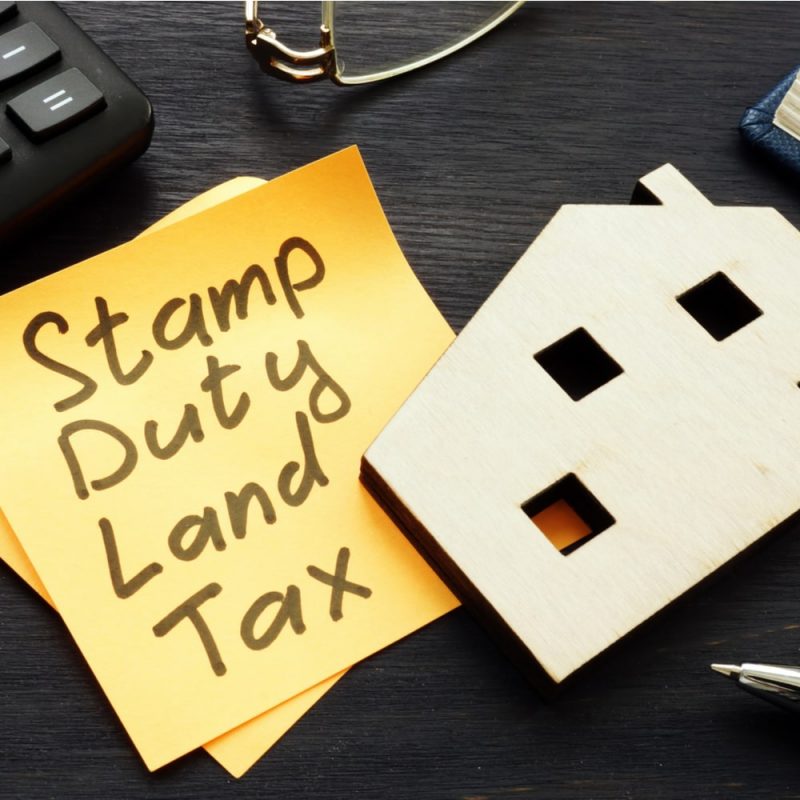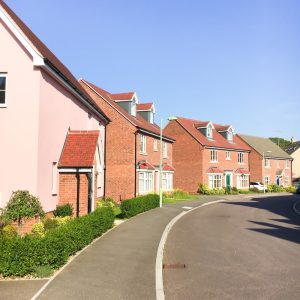
If you are thinking about buying a home, you may have to pay Stamp Duty Land Tax (SDLT). There are different stamp duty rates and rules depending on whether you are a first-time buyer or are buying a second home. The purchase price of the property is also relevant to how much SDLT is needed to be paid.
What is Stamp Duty Land Tax?
SDLT is a tax that is charged when you buy a residential property. You may have to pay SDLT if you buy a residential property or parcel of land in England or Northern Ireland above a certain price. From 1st October 2021, there is no SDLT payable for main home purchases under £125,000, unless you qualify for “first-time buyer’s relief.”
First-time buyer’s Relief
A first-time buyer is classed as someone who is buying their only or main home and has never previously owned or had an interest in either a freehold or leasehold residential property, whether in the UK or overseas.
If you are a first-time buyer, then you will pay not SDLT on property up to the value of £300,000. For property up to £500,000, no SDLT will be paid on the first £300,000. Following which you will pay SDLT at the rate of 5% on the remaining sum. In the given example, this would amount to £200,000.
For property over £500,000, the standard rates of SDLT will apply and you will not qualify for first-time buyer’s relief.
Besides the above requirements, other conditions for first-time buyer’s relief are:
- If you are part of a couple and one of you has previously owned a property before, then first-time buyer’s relief will not apply.
- The property must be used as a main residence or you must have a clear intention of doing so. Buy-to-let property is excluded from this relief.
- No third party must have an interest in the property. If, for example, your parents have contributed to the deposit, they must not have ownership via a Deed of Trust.
Standard Stamp Duty Rates
If you do not qualify for any SDLT relief, then the rates below will apply to your purchase:
| Minimum Purchase Price | Maximum Purchase Price | Stamp Duty Rate |
| £0 | £125,000 | 0% |
| £125,001 | £250,000 | 2% |
| £250,001 | £925,000 | 5% |
| £925,001 | £1.5 million | 10% |
| Over £1.5 million | 12% |
Stamp Duty Rates on Second or Additional Property
If you are purchasing a home besides the home you live in, you will have to pay an extra 3% in SDLT on top of the standard rates shown in the table above. This rate applies to property purchased at £40,000 or over. Although it does not apply to mobile homes, houseboats or caravans.
If you are replacing your main residence, you will not have to pay the additional 3% providing your property has already been sold. If your main residence has not sold on the day you complete the new purchase, the higher rate will apply. This is because you are classed as owning two properties. Although you can apply for a refund if you sell your former main home within 36 months.
If it takes over 36 months to sell your former main home, you might still be able to claim a refund if all the following criteria apply:
- Your new home was bought on or after 1st January 2017
- There were exceptional circumstances that prevented you from selling your former home, e.g., government restrictions because of Coronavirus
- You have now sold your former home
- To claim a refund, you must write to HM Revenue & Customers (HMRC) explaining why the sale took longer than 36 months.
Additional homes rates are:
| Minimum Purchase Price | Maximum Purchase Price | Stamp Duty Rate (this applies to the part of the property within each band) |
| £0 | £125,000 | 3% |
| £125,001 | £250,000 | 5% |
| £250,001 | £925,000 | 8% |
| £925,001 | £1.5 million | 13% |
| Over £1.5 million | 15% |
What is classed as a “Main Residence”?
The basic definition of a main residence is where a person spends the largest amount of their time each year. Obviously, if you only live in one property, this will count as your main residence. However, for those who occupy more than one property, the situation becomes more complicated.
In order to determine someone’s main residence, official government guidance for the purposes of SDLT sets out several questions:
- If the buyer is in a civil partnership or married, where does the family spend the largest amount of family time?
- If the buyer has children, where do they attend school?
- Where is the buyer registered to vote from?
- Where does the buyer work?
- How is the residence furnished?
- Which address is used by the buyer for official correspondence?
- Where has the buyer registered with a GP or dentist?
- If they own a car, where is vehicle registered?
- What is the main address for council tax?
For the purpose of SDLT, those who are married or in a civil partnership are treated as one person. This means anything owned by one party is considered as being owned by both parties. Therefore, a purchase or sale in one name is still relevant and may influence whether SDLT is due when buying a new property. This could have the effect that married couples may occasionally have to pay the 3% charge when unmarried couples do not.
Stamp Duty for Non-residents
If you are a non-UK resident purchasing a residential property, you may have to pay an extra 2% on top of the existing Stamp duty rates for property over £40,000. This rule came into effect on 1st April 2021.
When to Pay Stamp Duty
You will have 14 days to file an SDLT return and pay any sums due. If you do not submit a return and pay the tax due within the 14-day period, you may incur penalties and interest from HMRC.
How Stamp Duty is Paid
Your conveyancing solicitor deals with the SDLT return and makes any payment due on your behalf. Although it is possible to do it yourself. In any case, you are responsible for ensuring it is submitted on time. An SDLT return must still be submitted even in cases where no Stamp Duty is payable, unless the purchase is exempt.
Circumstances when Stamp Duty is not Payable
There are situations where SDLT might not be payable, including:
- Transfer of property because of a court order during separation, divorce or civil partnership dissolution. Such transfers are generally exempt. If a couple separates permanently without obtaining a court order, they will be treated as an unmarried couple for SDLT purposes.
- Any property left under the terms of a Will may be exempt provided no consideration is given. There is generally no obligation to inform HMRC in such cases.
- If the owner of a property gifts it to another, they will not be required to pay SDLT on the market value of the property. This is providing there is no outstanding mortgage. If the person being gifted the property takes over some or all of the existing mortgage, SDLT may be payable on the amount of the mortgage over the relevant SDLT threshold.
- Alternative property financial arrangements have been made, for example complying with Sharia law.
- The freehold property is purchased for £40,000 or less.
- A new or assigned lease of 7 years or more is purchased (providing the premium is less than £40,000 and the annual rent is lower than £1,000.
New Leasehold Sales and Transfers
If you are buying a new residential leasehold property, you will pay SDLT on the purchase price of the lease. This is called the “lease premium.” If the total amount of the rent over the life of the lease (called the “net present value”) is over the SDLT threshold of £125,000, you will pay SDLT at 1% on the part over £125,000. This does not apply to existing leases.
The rules for filing an SDLT return for an assigned or existing lease are the same as the rules for purchasing a freehold property if the sale price is £40,000 or over. A return must still be submitted, even if no SDLT is due.
Recent Posts
- How to Get an Accurate Conveyancing Online Quote
- Mortgage Options Explained – Complete Guide
- Shared Ownership Properties – Eligibility, Benefits and Disadvantages
- How Does Online ID Check Process Work?
- Difference between Freehold and Leasehold Property
- The Difference Between SRA and CLC
- The Key People Involved in House Buying Process
Other Posts
-
25 Jan 2023
Moving home is an exciting but often stressful process. Once your offer has been accepted, you will then need to appoint a conveyancer who will carry out the legal aspects of your property transaction. More and more home movers look to do so by looking online and one of the key steps of the process […]...
-
08 Jun 2022
In today’s market, there are many types of mortgage options and knowing which one is suitable for you is vital if you want to get the right deal. Even though every mortgage tends to function in a similar way, things such as repayment methods, interest rates, and fees can all be different between products. Finding […]...
-
26 May 2022
If you are struggling to find an affordable home, one solution worthy of consideration is shared ownership. This is halfway between renting and buying and aims to reduce the considerable obstacle facing first-time buyers — the need to raise a big enough deposit. For many, shared ownership bridges the gap between renting and getting on […]...
-
13 May 2022
The law demands that solicitors, conveyancing professionals, banks, building societies and mortgage brokers obtain satisfactory evidence of the identity of their clients in order to satisfy Money Laundering Regulations. To this end, there is an increasing demand for methods of online ID check When purchasing a property, the risk of fraud is high because large […]...
-
03 May 2022
Both leasehold and freehold are ways you can own a property and it is important to know the difference because it affects your ownership and the future sale of your home. Leasehold and freehold are principally different forms of legal ownership. If you own the freehold, it means you own both the building and the […]...




